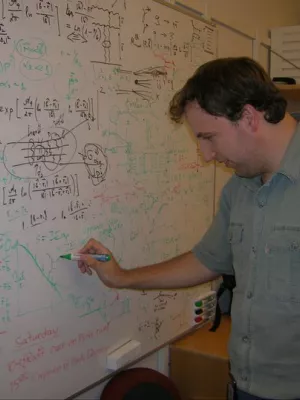
Roman Pasechnik
Senior lecturer

Gravitational footprints of massive neutrinos and lepton number breaking
Author
Summary, in English
We investigate the production of primordial Gravitational Waves (GWs) arising from First Order Phase Transitions (FOPTs) associated to neutrino mass generation in the context of type-I and inverse seesaw schemes. We examine both “high-scale” as well as “low-scale” variants, with either explicit or spontaneously broken lepton number symmetry U(1)L in the neutrino sector. In the latter case, a pseudo-Goldstone majoron-like boson may provide a candidate for cosmological dark matter. We find that schemes with softly-broken U(1)L and with single Higgs-doublet scalar sector lead to either no FOPTs or too weak FOPTs, precluding the detectability of GWs in present or near future measurements. Nevertheless, we found that, in the majoron-like seesaw scheme with spontaneously broken U(1)L at finite temperatures, one can have strong FOPTs and non-trivial primordial GW spectra which can fall well within the frequency and amplitude sensitivity of upcoming experiments, including LISA, BBO and u-DECIGO. However, GWs observability clashes with invisible Higgs decay constraints from the LHC. A simple and consistent fix is to assume the majoron-like mass to lie above the Higgs-decay kinematical threshold. We also found that the majoron-like variant of the low-scale seesaw mechanism implies a different GW spectrum than the one expected in the high-scale seesaw. This feature will be testable in future experiments. Our analysis shows that GWs can provide a new and complementary portal to test the neutrino mass generation mechanism.
Department/s
- Theoretical Particle Physics - Has been reorganised
Publishing year
2020
Language
English
Publication/Series
Physics Letters, Section B: Nuclear, Elementary Particle and High-Energy Physics
Volume
807
Document type
Journal article
Publisher
Elsevier
Topic
- Subatomic Physics
Status
Published
ISBN/ISSN/Other
- ISSN: 0370-2693

